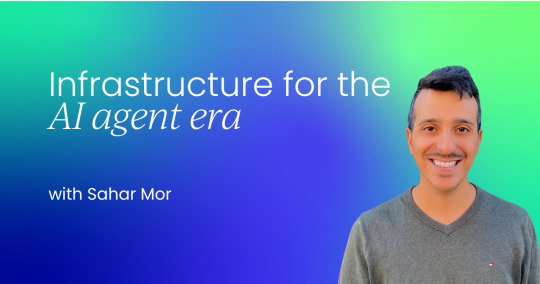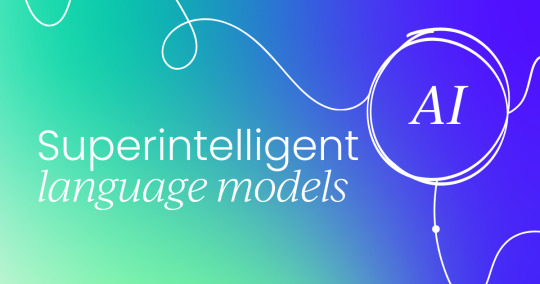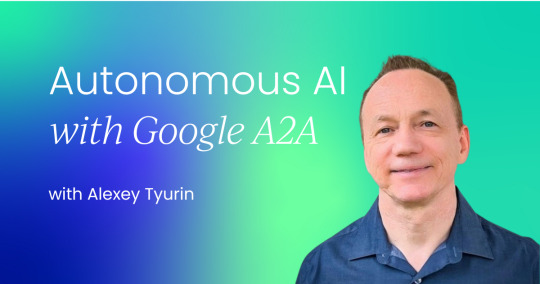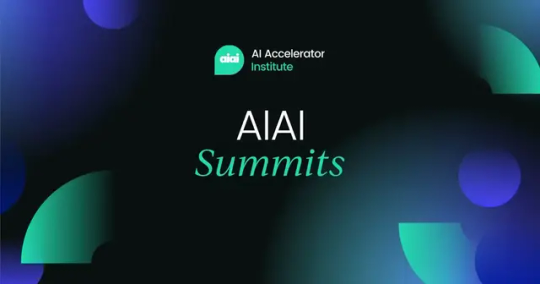#applied AI
Explore tagged Tumblr posts
Text
CAP theorem in ML: Consistency vs. availability
New Post has been published on https://thedigitalinsider.com/cap-theorem-in-ml-consistency-vs-availability/
CAP theorem in ML: Consistency vs. availability

The CAP theorem has long been the unavoidable reality check for distributed database architects. However, as machine learning (ML) evolves from isolated model training to complex, distributed pipelines operating in real-time, ML engineers are discovering that these same fundamental constraints also apply to their systems. What was once considered primarily a database concern has become increasingly relevant in the AI engineering landscape.
Modern ML systems span multiple nodes, process terabytes of data, and increasingly need to make predictions with sub-second latency. In this distributed reality, the trade-offs between consistency, availability, and partition tolerance aren’t academic — they’re engineering decisions that directly impact model performance, user experience, and business outcomes.
This article explores how the CAP theorem manifests in AI/ML pipelines, examining specific components where these trade-offs become critical decision points. By understanding these constraints, ML engineers can make better architectural choices that align with their specific requirements rather than fighting against fundamental distributed systems limitations.
Quick recap: What is the CAP theorem?
The CAP theorem, formulated by Eric Brewer in 2000, states that in a distributed data system, you can guarantee at most two of these three properties simultaneously:
Consistency: Every read receives the most recent write or an error
Availability: Every request receives a non-error response (though not necessarily the most recent data)
Partition tolerance: The system continues to operate despite network failures between nodes
Traditional database examples illustrate these trade-offs clearly:
CA systems: Traditional relational databases like PostgreSQL prioritize consistency and availability but struggle when network partitions occur.
CP systems: Databases like HBase or MongoDB (in certain configurations) prioritize consistency over availability when partitions happen.
AP systems: Cassandra and DynamoDB favor availability and partition tolerance, adopting eventual consistency models.
What’s interesting is that these same trade-offs don’t just apply to databases — they’re increasingly critical considerations in distributed ML systems, from data pipelines to model serving infrastructure.
The great web rebuild: Infrastructure for the AI agent era
AI agents require rethinking trust, authentication, and security—see how Agent Passports and new protocols will redefine online interactions.

Where the CAP theorem shows up in ML pipelines
Data ingestion and processing
The first stage where CAP trade-offs appear is in data collection and processing pipelines:
Stream processing (AP bias): Real-time data pipelines using Kafka, Kinesis, or Pulsar prioritize availability and partition tolerance. They’ll continue accepting events during network issues, but may process them out of order or duplicate them, creating consistency challenges for downstream ML systems.
Batch processing (CP bias): Traditional ETL jobs using Spark, Airflow, or similar tools prioritize consistency — each batch represents a coherent snapshot of data at processing time. However, they sacrifice availability by processing data in discrete windows rather than continuously.
This fundamental tension explains why Lambda and Kappa architectures emerged — they’re attempts to balance these CAP trade-offs by combining stream and batch approaches.
Feature Stores
Feature stores sit at the heart of modern ML systems, and they face particularly acute CAP theorem challenges.
Training-serving skew: One of the core features of feature stores is ensuring consistency between training and serving environments. However, achieving this while maintaining high availability during network partitions is extraordinarily difficult.
Consider a global feature store serving multiple regions: Do you prioritize consistency by ensuring all features are identical across regions (risking unavailability during network issues)? Or do you favor availability by allowing regions to diverge temporarily (risking inconsistent predictions)?
Model training
Distributed training introduces another domain where CAP trade-offs become evident:
Synchronous SGD (CP bias): Frameworks like distributed TensorFlow with synchronous updates prioritize consistency of parameters across workers, but can become unavailable if some workers slow down or disconnect.
Asynchronous SGD (AP bias): Allows training to continue even when some workers are unavailable but sacrifices parameter consistency, potentially affecting convergence.
Federated learning: Perhaps the clearest example of CAP in training — heavily favors partition tolerance (devices come and go) and availability (training continues regardless) at the expense of global model consistency.
Model serving
When deploying models to production, CAP trade-offs directly impact user experience:
Hot deployments vs. consistency: Rolling updates to models can lead to inconsistent predictions during deployment windows — some requests hit the old model, some the new one.
A/B testing: How do you ensure users consistently see the same model variant? This becomes a classic consistency challenge in distributed serving.
Model versioning: Immediate rollbacks vs. ensuring all servers have the exact same model version is a clear availability-consistency tension.
Superintelligent language models: A new era of artificial cognition
The rise of large language models (LLMs) is pushing the boundaries of AI, sparking new debates on the future and ethics of artificial general intelligence.

Case studies: CAP trade-offs in production ML systems
Real-time recommendation systems (AP bias)
E-commerce and content platforms typically favor availability and partition tolerance in their recommendation systems. If the recommendation service is momentarily unable to access the latest user interaction data due to network issues, most businesses would rather serve slightly outdated recommendations than no recommendations at all.
Netflix, for example, has explicitly designed its recommendation architecture to degrade gracefully, falling back to increasingly generic recommendations rather than failing if personalization data is unavailable.
Healthcare diagnostic systems (CP bias)
In contrast, ML systems for healthcare diagnostics typically prioritize consistency over availability. Medical diagnostic systems can’t afford to make predictions based on potentially outdated information.
A healthcare ML system might refuse to generate predictions rather than risk inconsistent results when some data sources are unavailable — a clear CP choice prioritizing safety over availability.
Edge ML for IoT devices (AP bias)
IoT deployments with on-device inference must handle frequent network partitions as devices move in and out of connectivity. These systems typically adopt AP strategies:
Locally cached models that operate independently
Asynchronous model updates when connectivity is available
Local data collection with eventual consistency when syncing to the cloud
Google’s Live Transcribe for hearing impairment uses this approach — the speech recognition model runs entirely on-device, prioritizing availability even when disconnected, with model updates happening eventually when connectivity is restored.
Strategies to balance CAP in ML systems
Given these constraints, how can ML engineers build systems that best navigate CAP trade-offs?
Graceful degradation
Design ML systems that can operate at varying levels of capability depending on data freshness and availability:
Fall back to simpler models when real-time features are unavailable
Use confidence scores to adjust prediction behavior based on data completeness
Implement tiered timeout policies for feature lookups
DoorDash’s ML platform, for example, incorporates multiple fallback layers for their delivery time prediction models — from a fully-featured real-time model to progressively simpler models based on what data is available within strict latency budgets.
Hybrid architectures
Combine approaches that make different CAP trade-offs:
Lambda architecture: Use batch processing (CP) for correctness and stream processing (AP) for recency
Feature store tiering: Store consistency-critical features differently from availability-critical ones
Materialized views: Pre-compute and cache certain feature combinations to improve availability without sacrificing consistency
Uber’s Michelangelo platform exemplifies this approach, maintaining both real-time and batch paths for feature generation and model serving.
Consistency-aware training
Build consistency challenges directly into the training process:
Train with artificially delayed or missing features to make models robust to these conditions
Use data augmentation to simulate feature inconsistency scenarios
Incorporate timestamp information as explicit model inputs
Facebook’s recommendation systems are trained with awareness of feature staleness, allowing the models to adjust predictions based on the freshness of available signals.
Intelligent caching with TTLs
Implement caching policies that explicitly acknowledge the consistency-availability trade-off:
Use time-to-live (TTL) values based on feature volatility
Implement semantic caching that understands which features can tolerate staleness
Adjust cache policies dynamically based on system conditions
How to build autonomous AI agent with Google A2A protocol
How to build autonomous AI agent with Google A2A protocol, Google Agent Development Kit (ADK), Llama Prompt Guard 2, Gemma 3, and Gemini 2.0 Flash.

Design principles for CAP-aware ML systems
Understand your critical path
Not all parts of your ML system have the same CAP requirements:
Map your ML pipeline components and identify where consistency matters most vs. where availability is crucial
Distinguish between features that genuinely impact predictions and those that are marginal
Quantify the impact of staleness or unavailability for different data sources
Align with business requirements
The right CAP trade-offs depend entirely on your specific use case:
Revenue impact of unavailability: If ML system downtime directly impacts revenue (e.g., payment fraud detection), you might prioritize availability
Cost of inconsistency: If inconsistent predictions could cause safety issues or compliance violations, consistency might take precedence
User expectations: Some applications (like social media) can tolerate inconsistency better than others (like banking)
Monitor and observe
Build observability that helps you understand CAP trade-offs in production:
Track feature freshness and availability as explicit metrics
Measure prediction consistency across system components
Monitor how often fallbacks are triggered and their impact
Wondering where we’re headed next?
Our in-person event calendar is packed with opportunities to connect, learn, and collaborate with peers and industry leaders. Check out where we’ll be and join us on the road.
AI Accelerator Institute | Summit calendar
Unite with applied AI’s builders & execs. Join Generative AI Summit, Agentic AI Summit, LLMOps Summit & Chief AI Officer Summit in a city near you.

#agent#Agentic AI#agents#ai#ai agent#AI Engineering#ai summit#AI/ML#amp#applications#applied AI#approach#architecture#Article#Articles#artificial#Artificial General Intelligence#authentication#autonomous#autonomous ai#awareness#banking#Behavior#Bias#budgets#Business#cache#Calendar#Case Studies#challenge
0 notes
Text
#Opinión - El futuro de la IA y la computación en la nube, tendencias para el 2025
Actualmente las organizaciones están utilizando la Inteligencia Artificial (IA) para analizar grandes volúmenes de datos almacenados en la nube, obteniendo información y perspectivas que permiten mejorar operaciones y experiencias del cliente. Además, ofrece la escalabilidad y flexibilidad necesaria para que las empresas se adapten rápidamente y reduzcan costos (Fuente Baufest Latam). Al…
0 notes
Text
i hate to say it because i'm neurodivergent and a chronic-pain-haver but like... sometimes stuff is going to be hard and that's okay.
it's okay if you don't understand something the first few times it's explained to you. it's okay if you have to google every word in a sentence. it's okay if you need to spend a few hours learning the context behind a complicated situation. it's okay if you need to read something, think about it, and then come back to re-read it.
i get it. giving up is easier, and we are all broken down and also broke as hell. nobody has the time, nobody has the fucking energy. that is how they win, though. that is why you feel this way. it is so much easier, and that is why you must resist the impetus to shut down. fight through the desire you've been taught to "tl;dr".
embrace when a book is confusing for you. accept not all media will be transparent and glittery and in the genre you love. question why you need everything to be lily-white and soft. i get it. i also sometimes choose the escapism, the fantasy-romance. there's no shame in that. but every day i still try to make myself think about something, to actually process and challenge myself. it is hard, often, because of my neurodivergence. but i fight that urge, because i think it's fucking important.
especially right now. the more they convince you not to think, the easier it will be to feed you misinformation. the more we accept a message without criticism, the more power they will have over that message. the more you choose convenience, the more they will make propaganda convenient to you.
#personal#this also applies to ai art and stuff. like#artists and crafters and non-ai users took the time space and energy to learn things#bc we are actually LEARNING them. and it takes actual SKILL.#i know the skill is long to learn and often annoying. i still get frustrated about my art bc it's not good#but i do it myself. bc i respect that it IS a skill.#ai writing a book for you is not YOU learning how to write a book. and it took me a lifetime to write a book. i get it.#ai drones running a marathon don't run the marathon for u#there are things i cannot due to my disability. lol marathons being 1. there are things u can't do either#this is about stretching yourself in the ways that are healthy and good for you.#ai learning for u in ur classes is NOT healthy. u are not learning.#''but otherwise i won't pass''#first of all that's a self-defeating prophecy. and many of us who thought we wouldn't pass DID pass#and secondly. CHALLENGE urself. ur paying for college anyway. don't pay just to let AI learn for u.
3K notes
·
View notes
Text
Data Kinetic Introduces New Applied AI Solutions
Data Kinetic has introduced a groundbreaking suite of industry-focused applications, leveraging Applied AI technology to enhance existing healthcare workflows. This solution allows healthcare specialists to seamlessly execute models on their preferred platforms, ensuring air-gapped security for isolated models and safeguarding against data leakage. With a focus on minimal disruption, the technology aims to reduce burnout, optimize efficiencies, and prioritize patient privacy. The multi-modal models within the suite adopt a cold start approach, ensuring that patient data remains secure within the customer's environment, enabling organizations to build their AI assets while supporting existing workflows.
Data Kinetic's platform-agnostic strategy distinguishes them in the applied AI space, providing flexibility for organizations to evolve within trusted systems and achieve desired AI outcomes, particularly impactful in complex industries like healthcare. The suite addresses various healthcare challenges, including CMS Fraud Detection, Social Determinants of Health, Hospital Patient Volume Forecasting, Hospital Length of Stay Prediction, Adverse Drug Impact Detection, and Medical Supply Chain Optimization. For more information, visit their website: https://datakinetic.com/healthcare, and read about the solution in their blog post: https://datakinetic.com/blog/introducing-data-kinetics-healthcare-suite.
Read More - https://www.techdogs.com/tech-news/pr-newswire/data-kinetic-introduces-new-applied-ai-solutions-suite-for-the-healthcare
0 notes
Text
Aretove Technologies: Your Data Whispers, We Make it Roar

Lost in a sea of data? Aretove Technologies unlocks its hidden power. We harness Predictive Analytics, Data Science, Applied AI, and Business Intelligence to transform your whispers into thunderous insights. Boost efficiency, anticipate risks, and personalize experiences. With Aretove, your data isn't just noise, it's your competitive edge. Make it roar.
0 notes
Text
How Applied AI Can Transform Various Industries
Artificial intelligence (AI) is the science and engineering of creating machines and systems that can perform tasks that normally require human intelligence, such as perception, reasoning, learning, and decision-making. AI has been advancing rapidly in recent years, thanks to the availability of large amounts of data, powerful computing resources, and innovative algorithms.
To know more about Applied AI, click here
1 note
·
View note
Text
How Applied AI Can Transform Various Industries
Artificial intelligence (AI) is the science and engineering of creating machines and systems that can perform tasks that normally require human intelligence, such as perception, reasoning, learning, and decision-making. AI has been advancing rapidly in recent years, thanks to the availability of large amounts of data, powerful computing resources, and innovative algorithms.
To know more about Applied AI, click here.
1 note
·
View note
Text
Applied AI is a rose – understand the thorny challenges

Applied AI – the application of AI technology in business, is skyrocketing. An Accenture report on AI revealed that 84% of business executives believe that AI adoption would drive their business growth. Applied AI empowers businesses with end-to-end process automation and continuous process improvement for greater productivity and profitability.
0 notes
Text
Bad End Forever AU / Happily Over and After AU




(Isat / in stars and time spoilers)
Wanted to make some concept sprites for this au idea. Siffrin just keeps looping in act 5 Everytime he loses to the king. He never wakes up from Mirabelle and the gang. He just keeps waking up in the same. Broken. House.
#isat#in stars and time#in stars and time spoilers#isat spoilers#isat act 5 spoilers#in stars and time act 5 spoilers#isat siffrin#isat au#sheepstitches art#please do not use my sprites without credit or claim them as yours or put them in ai websites thx#same applies to my art in general#if you wanna ask about this idea i might open my ask box#might make more concepts later#isat bad end forever#happily over and after au#isat happily Over and After#hoaa#isat hoaa#happily over and after
340 notes
·
View notes
Text
ok I just watched Ashly Burch’s (Aloy’s voice actor) video responding to the horrid ai Aloy thing going around, and let me just say, I respect the fuck out of her. For an actress who has such an intimate relationship with a game company (she provides both voice and mocap for Aloy— absolutely invaluable if they want to continue the franchise) she was fully transparent about how she disapproved of it and supported the current strike against video game acting to demand ai reforms. Which is just. Such a badass move.
Seriously all I could think the whole time was like “Aloy would sooo do this” LMAO 😭
#like aloy would fucking hate this useage of ai#obvi she works with ai on the regular#but she knows exactly how ai can be applied to save lives and make the world better#not pollute the environment to steal actor’s performances and generate inhuman slop#Ashly is also just such a queen#like ilysm#horizon forbidden west#aloy#horizon zero dawn#hfw#hzd#ashly burch#ai#video games
278 notes
·
View notes
Text

I had a thought --- You know how Conan and Haibara are also the "same age" as Anya and the Eden kids in spy x family? So hence here's Conan and Haibara in the Eden uniforms since I can allow myself to fantasise.
I don't know if this has been done before, but I like coai a very lot, they're my childhood. There's just something about their camaraderie and mutual trust that makes me so happy.
#coai#haibara ai#detective conan#dcmk#conan edogawa#shinichi kudo#miyano shiho#alternate universe#crossover#eden academy#spy x family#sxf#Conan will bring all his murder cases to Eden#They're both smart enough for the smart kids school of course#Just imagining all the Conan universe logic applied in a more western/European setting like the one in sxf
773 notes
·
View notes
Text


lil swing :3
[ Description in ALT ]
#original#artists on tumblr#oc#original character#ai oc#robot oc#Y2K#frutiger aero#cybercore#aster#rigel (aster)#CaelOS#someone in the process of this commented the background reminds them of ps2 so the aesthetic tags fit goddammit#alternative title: look ma no lineart!#this was very time consuming but i guess for an experiment this looks great#the only lines in this thing were applied to rigel post-rendering to highlight some shapes#what was that about wanting to explore simpler styles but go above rapid sketches???
186 notes
·
View notes
Text

Union yaoi warmup sketches!
#mostly to demo if i can actually draw these guys or no since i applied for the zine!#may i get in 🤞 but idm drawing thesr two again to pay yaoi tax thru convention earnings#this is such a creative way to get everyone invloved in the movement and im so happy that AEI played into the bit. legendary shit#plus umbert and misterman have like. my favourite ship dynamic HAHA#them as reimari is non negotioable btw. i am cirrect in this#umbert actually#misterman guyfella#union yaoi#stand with animation#no ai#corr art
353 notes
·
View notes
Text
It is important to value art.
Yes, even if it was made by someone with different opinions.
Yes, even if you don't like the artstyle.
Yes, even if you don't like what it's about or portraying.
Yes, even if you don't like the medium.
Yes, even if you think it's bad, lazy, or pointless.
Just because you don't like the art and/or the artist doesn't mean you need to devalue it as a piece of art. It is still art. And art is important.
#this doesnt apply to AI images thats not real art#also feel free to add on if you can think of more#proship#anti anti#anti harassment#profic#proship safe#profiction#proship please interact#comship please interact#comship
153 notes
·
View notes
Text
everytime u draw illyrian the same skin tone as a texan man an angel loses her wings and catches on fire
#she shrivels and burns#this also applies to ur shitty ai art#no one but losers like it sorry not sorry#its ugly as fuck#acotar#azriel#acotar cassian#rhysand#can i get some real melanin in here#listen i know sjm is afraid of brown people but that doesnt mean we arw#hashtag i hate sjm and white ass fanart#acotar fanart
33 notes
·
View notes
Text









What happened to you? [...] None of your business.
KISEKI: DEAR TO ME Ep. 10
#kiseki: dear to me#kisekiedit#kdtm#kiseki dear to me#ai di x chen yi#chen yi x ai di#nat chen#chen bowen#louis chiang#chiang tien#jiang dian#userspring#userrain#userspicy#uservid#userjjessi#pdribs#*cajedit#*gif#i made myself insane about the caption bc it could be applied to both of them <3#chen yi what happened how did you get injured? and hes like 'its not a big deal whatever'#ai di what happened why do you strangle me when i get close to you now? and he's like#WOULDNT YOU LIKE TO KNOW WEATHERBOY (angst edition)#anyway the actual point of this set was the way ai di is sleeping and the way chen yi is looking at him so thats cool#its just....really soft and sweet#i caNT IMAGINE what chen yi thinks or feels finding ai di holding his jacket in his sleep.......like. ahghdfkdkjfdksj#ive giffed this before and will probably gif it again#lbr i've giffed every scene so many times bc they have so few scenes and i am getting EVERYTHING I CAN OUT OF THEM#WHICH IS A LOT!!! they're everything to me
188 notes
·
View notes